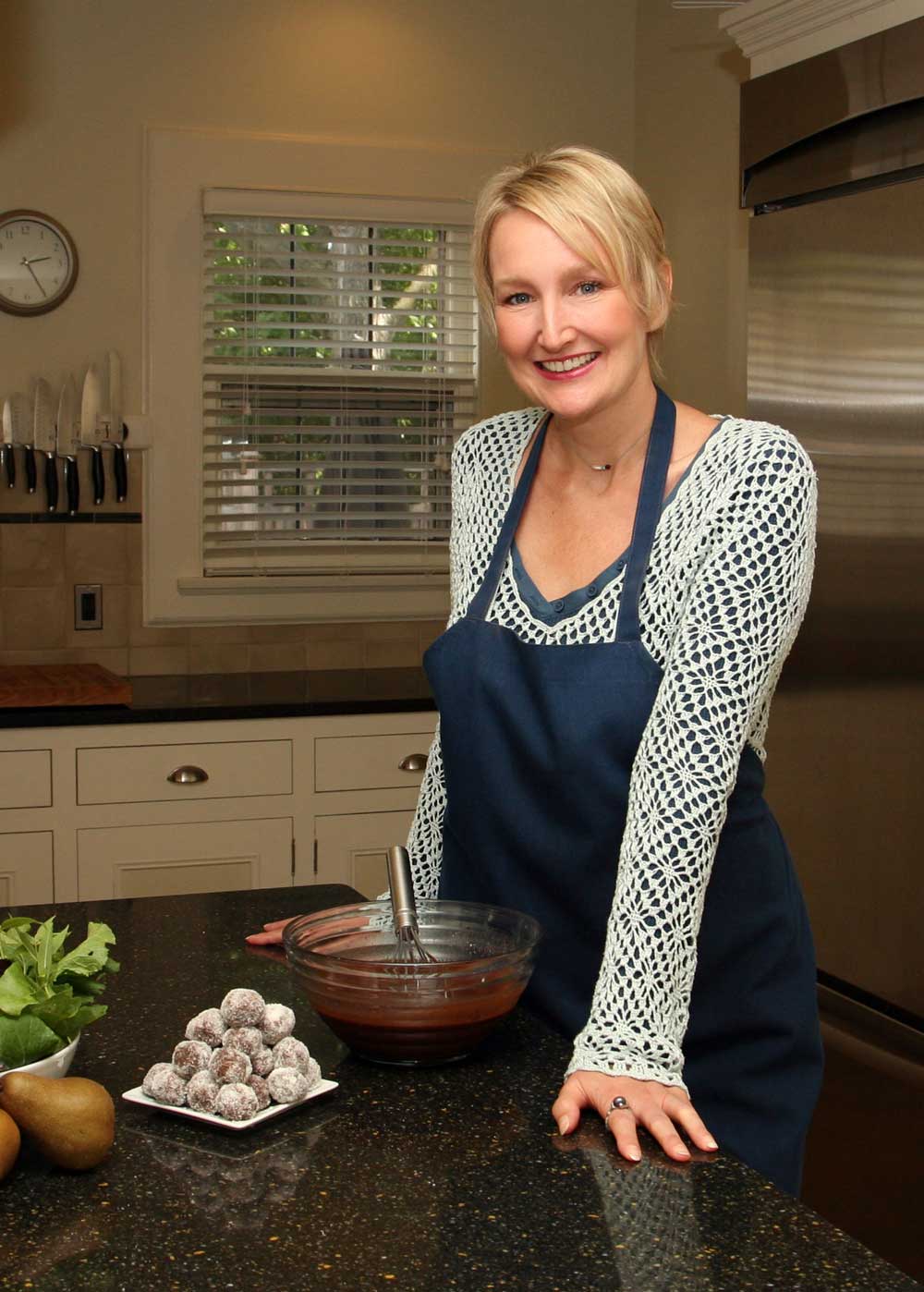RECIPE: Roast Chicken with Figs, Thyme, Garlic, & Sweet Potatoes
 Monday, February 6, 2012 at 10:40PM
Monday, February 6, 2012 at 10:40PM  Elisabeth Veltman, The Tender Foodie tagged
Elisabeth Veltman, The Tender Foodie tagged  Recipe,
Recipe,  carrot,
carrot,  figs,
figs,  food allergies,
food allergies,  garlic,
garlic,  roast chicken,
roast chicken,  sweet potato,
sweet potato,  thyme
thyme  Email Article
Email Article  Print Article in
Print Article in  Recipe
Recipe  Thyme from the garden - picked in Michigan in January.
Thyme from the garden - picked in Michigan in January.
Thyme in January
When I first moved to Michigan 6 years ago, thyme was one of the first herbs I planted. I was so grateful to have dirt to play in (15 years in the concrete jungle makes you appreciate stuff like that), that even in winter, I stepped out to stare at my garden and plan for the coming summer. To my surprise, the thyme was thriving under the snow. It had also turned a deeper green, and the most exposed leaves sported a beautiful hue of purple.
Thyme and roast chicken are a classic combination winter-wise. But since it stops growing when Jack Frost comes to town, I only harvest a few sprigs during its dormancy. So one day in January, I made an unusual garden trek in my wellies, without a coat, and on an unseasonably warm day...to pick some thyme. Then stuffed the butt of an organic chicken with this precious herb, along wtih lime, figs, and garlic.
Thyme grows best in July and August, so during the summer I put it into glass jars or ziploc bags, then "just" cover the thyme with olive oil, and freeze. When I remove from the freezer, I use the infused olive oil as well as the thyme for diferent dishes. This recipe has become a favorite means of making beta-carotene loving sweet potatoes as well. They soak up the chicken juices and the beta carotene is activated by the olive oil.

Ingredients
1 -- 5-6 lb organic, roaster chicken (choose organic to be sure that the chicken has not been injected with a gluten-based solution)
CHEF TIP: one method to get the skin crispy when roasting is to place it in the refrigerator prepared in the pan and leave uncovered for a few hours. This gets the excess moisture out of the skin which helps it brown.
2 cups of organic parsnips (rough chopped into 2 inch pieces)
2 cups of organic carrots (rough chopped into 2 inch pieces)
3- 4 sweet potatoes (ends sliced off, and chopped into 1 inch x 2 inch pieces)
1 head of garlic (root sliced off, head rough chopped in half)
1 lime (or lemon), cut in half
Dried figs (stems chopped off, 5 per chicken butt, 1 handful to mix with veggies)
25 sprigs of thyme (20 per chicken butt, 5 with veggies)
*if you don't have thyme, this recipe actually works well without it, too.
Olive Oil
Sea Salt
Recipe
Preheat the oven to 425 F degrees. Place the racks low in the oven so the roaster can fit.
Vegetables: Spread the carrots, parsnips, sweet potatoes and figs along the bottom of the pan. The veggies act as a rack for your chicken. Sprinkle the 5 thyme sprigs throughout. Place about 1 TBS of olive oil and 1-2 tsp. of salt into your hands and toss the vegetables with it.
Giblets: Pull out the giblets and neck and throw into a hot pan with a little olive oil. Fry them up (brown on all sides) and put aside for another use (the cat likes them). I use the neck and carcass of the chicken in the Nourished Kitchen's slow cooking, immune-building bone broth, a recipe I have come to love and use often. Pan-fry the neck as well and refrigerate overnight and then toss it into the bone broth the next day with the left over chicken and bones.
 Frying Giblets
Frying Giblets
Chicken: Rinse the chicken inside and out and remove any pin feathers. Cut excess flabby fat from the chicken, but leave the skin on. Pat the skin dry with a paper towel. I always rinse my chicken, however, I've noticed that not all chefs do this.
Rub the outside of the chicken with olive oil, and salt the outside and the inside of the chicken.
Stuff the chicken cavity (the butt end) with the 20 sprigs of thyme, 5 or 6 figs and the whole head of halved garlic, and the halved lime (or lemon). Then place on the vegetables and tuck the wings under its body (or they could overcook).
CHEF TIP: one method to get the skin crispy when roasting is to place it in the refrigerator prepared in the pan and leave uncovered for a few hours. This gets the excess moisture out of the skin which helps it brown.
Place the roaster in the oven at 425 degrees F for 1 hour and 30 minutes.
When the juices between the leg and the thigh run clear (not bloody or thick), your chick is done.
Remove from the oven and let rest, covered, for 10 minutes before carving.
Joy!
Serve a Healthy Dessert
Serve the 14-Allergen-Free, Not Your Mamma's Chocolate Mousse Tart for dessert. MMM.
 Not Your Mamma's Chocolate Mousse Tart is Nut-free, Dairy-free, Gluten-free, Sesame-Free, Oat-free, Egg-free, Corn-free, Coconut-free, & Soy-free...
Not Your Mamma's Chocolate Mousse Tart is Nut-free, Dairy-free, Gluten-free, Sesame-Free, Oat-free, Egg-free, Corn-free, Coconut-free, & Soy-free...










